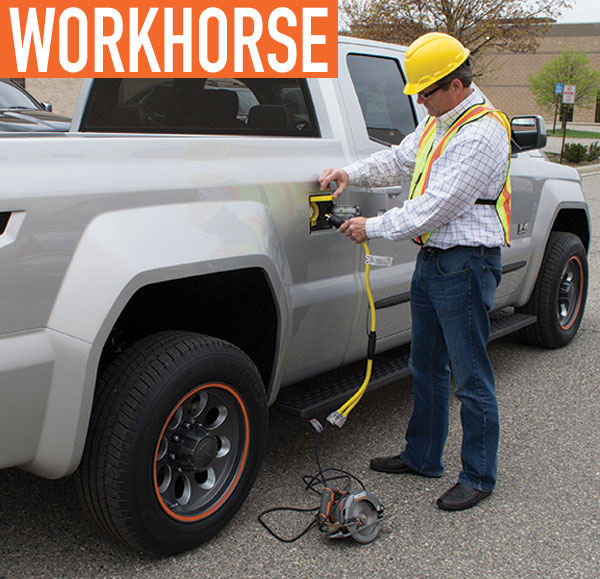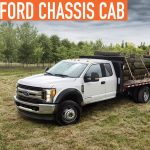Industries all experience progress in different ways. For the package delivery industry, progress is unmanned drones that assist drivers in making their deliveries. For the passenger transportation industry, progress is self-driving cars or large drones that carry riders high above the traffic. For commercial truck fleets, progress is battery-powered electric trucks that give drivers more performance and versatility while reducing costs for fleet managers.
BREACHING THE MARKET
Electric vehicles have several advantages over traditional vehicles, including superior performance capabilities in key categories of driving, as well as a lower cost of ownership due to lower fuel and maintenance costs. Of course, there’s also the environmental impact of lower emissions.
However, despite their advantages, electrical pickup trucks have not yet made their way into commercial vehicle fleets in the same way electric cars have penetrated the consumer market or the way electric step vans have entered the commercial delivery market. What’s been holding electric pickups back is the absence of a viable model for the vehicle of choice for fleets. Fleet managers require pickups that are powerful, reliable, and safe in addition to providing long-term cost savings.
These factors that have kept electric pickup trucks out of commercial fleets directly informed the efforts of Workhorse Group to create the new W-15 electric pickup truck.
NO MORE ANXIETY
First of all, nothing is more important than the lives of fleet drivers. Workhorse Group believes the W-15 will be the safest pickup truck on the market, because it has a large frontal crush zone and a low center of gravity. It also has standard safety features for collision avoidance, including automatic braking and lane departure warning.
The fuel efficiency rating of the W-15 is around 75 MPGe in all-electric mode. That figure alone is enough to get the attention of commercial fleet managers who are accustomed to looking at low double digit MPG ratings in traditional fleet trucks. But, the fuel efficiency of electric trucks isn’t a panacea by itself—the flip side is range anxiety, or the concern that the batteries will deplete before the vehicle returns from its journey.
Range anxiety was a significant barrier to entry for electric vehicles in commercial fleets, but the W-15 is equipped with an auxiliary gasoline engine that works as a range extender. The battery range in the W-15 is 80 miles, which is sufficient for taking care of the vast majority of fleet activities. Should the driver need more driving distance, the range extender kicks into action for more driving miles. That’s the advantage of a range-extended electric pickup truck: It provides all the fuel savings of a traditional electric vehicle, but without the range anxiety.
BIG SAVINGS
One financial benefit that’s true for all electric vehicles, meanwhile, is the substantial savings that result from avoiding prolonged maintenance costs. In traditional trucks, the constant stopping and starting that fleet driving requires put excessive strain on the vehicle’s engine, transmission, and differential. But, such maintenance-intensive problems don’t happen to electric vehicles like the W-15.
The result for fleets can be tens of thousands of dollars in savings from not having to pay for maintenance costs over the long term. Workhorse’s electric step vans—currently in use by package delivery companies—provide an estimated savings of $150,000 for each truck over 20 years.

Featured Image: New Workhorse W-15 electric pickup.
SURPRISING PERFORMANCE
While fleet managers find these cost savings appealing, the last remaining roadblocks to accepting electric vehicles into fleets are performance-related concerns. Fleet vehicles have to be strong enough to complete the variety of driving challenges that commercial fleet trucks must overcome every day.
While Workhorse Group can’t speak to the capabilities of all electric vehicles, its own W-15 reveals the potential these vehicles have. The W-15 uses a true all-wheel drivetrain (AWD), so it can handle driving on gravel roads or snow-covered streets with ease. The pickup also features a pair of electric engines, including one on each axle, which together can generate 460 hp plus more torque than a HEMI V8 diesel engine in a heavy-duty pickup. And, as fleet drivers know, torque is how a truck gets work done—like hauling a heavy payload up a steep embankment.
But, excellent driving power isn’t the only advantage of having batteries on board a fleet truck. The W-15 has a built-in 7.2 kw electrical outlet that is powered by the truck’s batteries and into which fleet drivers can plug their tools. This integrated functionality not only eliminates the need for extension cords, which reduces clutter, but it also enables drivers to use power tools in remote locations where electricity isn’t readily available.
EYE-CATCHING STYLE
Finally, there’s one advantage to certain electrical vehicles—including the W-15—that isn’t readily apparent to fleets: the eye-catching exterior designs of these vehicles. For fleet managers, having nice looking trucks in the fleet is important. These vehicles are the public face of the company. So, when the fleet trucks look modern and professional, that reflects well on the image of the company that owns them. That’s why Workhorse Group gave the W-15 a bold exterior design that includes fluid body lines, making it comparable in size and style to a conventional pickup.
What’s been most interesting about Workhorse Group’s quest to build the W-15, and what the company thinks is responsible for much of the interest in the truck so far, is that it didn’t set out to build the world’s greatest electric pickup. Instead, the company’s objective was to build the best pickup truck for commercial fleets, period. But, after consulting with drivers and managers and researching the functional and financial needs of commercial fleets, it became clear that an electric pickup truck powered by lithium-ion batteries, with the insurance policy of a built-in gasoline range extender, was the best solution.
The W-15 is scheduled for release in 2018, but the response from industry leaders, including at municipalities and utilities companies, has been overwhelming. Already nearly 5,000 letters of intent have been issued for the W-15, and more orders are expected as Workhorse Group continues to develop an electric pickup truck designed to provide the performance fleet managers need, with the reliability and cost savings that make their jobs easier.
ABOUT THE AUTHOR:
Stephen Burns is founder and chief executive of Workhorse Group, a manufacturer of battery-electric delivery vehicles and fully integrated truck-launched unmanned aerial systems.
_______________________________________________________________________
MODERN WORKTRUCK SOLUTIONS: MAY 2017 ISSUE
Did you enjoy this article?
Subscribe to the FREE Digital Edition of Modern WorkTruck Solutions magazine.
![]()




